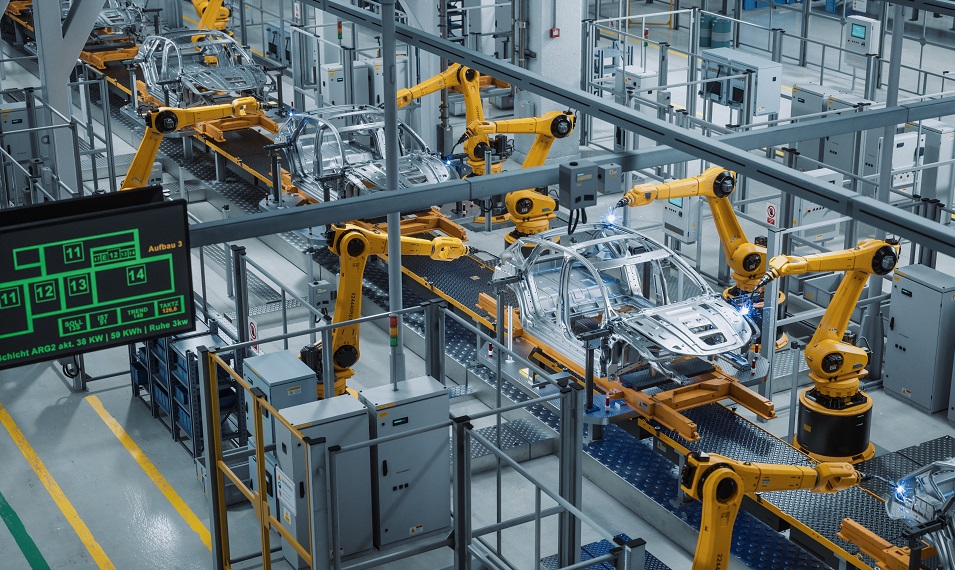The world of business is constantly evolving, and staying ahead requires embracing change. One of the most powerful tools for achieving this is automation. It’s no longer a futuristic concept; it’s a tangible strategy that can significantly improve efficiency, reduce costs, and free up valuable human resources. This article will delve into the various types of automation, explore its benefits, and provide practical guidance on how to implement it effectively. At the heart of this discussion lies the concept of automation, and understanding its nuances is crucial for any organization looking to optimize its operations. Let’s explore how this transformative technology can reshape how we work and achieve greater success.

What is Automation, Really?

At its core, automation is the use of technology to perform tasks automatically, without direct human intervention. It’s about streamlining processes, reducing errors, and increasing speed. It’s not simply replacing jobs; it’s often about augmenting human capabilities by handling repetitive, mundane tasks, allowing employees to focus on more strategic and creative work. Think about it – manually entering data, sending emails, or performing basic customer service inquiries – these are all areas ripe for automation. The key is to identify tasks that are repetitive, rule-based, and require a consistent execution. The goal isn’t to eliminate all human interaction, but to handle the majority of those interactions efficiently and accurately. Different levels of automation exist, ranging from simple rule-based systems to sophisticated robotic process automation (RPA).

Types of Automation – A Deep Dive
There’s a diverse landscape of automation technologies available, each suited for different needs and industries. Let’s examine some of the most prevalent types:

Robotic Process Automation (RPA)
RPA is arguably the most widely recognized form of automation today. It involves using software robots (bots) to mimic human actions within computer systems. These bots can interact with applications, extract data, and perform tasks that would typically require a human. RPA is particularly effective for automating repetitive tasks like data entry, invoice processing, and report generation. Companies like UiPath, Automation Anywhere, and Blue Prism are leading the charge in this area. The benefits of RPA include increased speed, reduced errors, and improved efficiency. However, it’s important to note that RPA is best suited for tasks that are highly structured and predictable.

Business Process Automation (BPA)
BPA encompasses a broader range of techniques, including workflow automation, intelligent automation, and process mining. Workflow automation tools allow organizations to define and automate complex business processes, such as order fulfillment, customer onboarding, and employee onboarding. Intelligent automation leverages artificial intelligence (AI) and machine learning (ML) to automate more complex tasks, such as decision-making and predictive analytics. Process mining analyzes existing processes to identify areas for improvement and automation opportunities. This approach is particularly valuable for organizations seeking to optimize their operations and gain a competitive advantage.

Robotic Process Automation (RPA) – Expanded
As mentioned earlier, RPA is a subset of automation. It’s focused specifically on automating tasks within existing software applications. Unlike traditional automation, which often requires significant modifications to existing systems, RPA typically works within the confines of the software’s interface. This makes it a more flexible and less disruptive approach to implementation. RPA is frequently used to streamline customer service interactions, automate data entry, and improve internal workflows.

Low-Code/No-Code Automation
The rise of low-code and no-code platforms has democratized automation. These platforms allow users with limited coding experience to build and deploy automation solutions using visual interfaces and drag-and-drop functionality. This significantly accelerates the development process and reduces the need for specialized technical expertise. Tools like Microsoft Power Automate, Zapier, and IFTTT are popular examples of low-code/no-code platforms. These platforms are ideal for automating simple workflows and integrating different applications.

AI-Powered Automation
Artificial intelligence (AI) is increasingly being integrated into automation solutions. AI-powered bots can learn from data, adapt to changing conditions, and perform tasks that were previously considered too complex for robots. This includes natural language processing (NLP) for understanding and responding to human language, computer vision for analyzing images and videos, and machine learning for predictive analytics. AI-powered automation is transforming industries like healthcare, finance, and manufacturing.

Benefits of Automation – A Strategic Advantage
The implementation of automation strategies delivers a multitude of benefits for organizations. Here are some key advantages:

- Increased Efficiency: Automating repetitive tasks frees up employees to focus on higher-value activities.
- Reduced Costs: Automation minimizes errors, reduces labor costs, and optimizes resource utilization.
- Improved Accuracy: Automated systems are less prone to human error, leading to more accurate data and processes.
- Enhanced Productivity: Employees can accomplish more in less time, boosting overall productivity.
- Scalability: Automation allows organizations to easily scale their operations to meet changing demands.
- Better Customer Experience: Faster response times and personalized service contribute to a more satisfying customer experience.
Challenges and Considerations for Implementation
While the benefits of automation are compelling, it’s important to acknowledge the challenges involved in implementation. Some key considerations include:
- Change Management: Introducing automation often requires significant changes to existing workflows and processes. Effective change management is crucial for ensuring successful adoption.
- Data Security: Automated systems handle sensitive data, so robust security measures are essential.
- Integration Challenges: Integrating automation solutions with existing systems can be complex and require careful planning.
- Employee Training: Employees need to be trained on how to use and manage new automation tools.
- Initial Investment: Implementing automation solutions can require a significant upfront investment in software, hardware, and training.
The Future of Automation – Trends to Watch
The field of automation is constantly evolving. Several key trends are shaping its future:
- Low-Code/No-Code Automation: This trend will continue to accelerate, making automation more accessible to a wider range of users.
- AI-Powered Automation: AI will play an increasingly important role in automating complex tasks and making decisions.
- Cloud-Based Automation: Cloud-based platforms are simplifying the deployment and management of automation solutions.
- Process Mining: Process mining will become more sophisticated, enabling organizations to identify and optimize their processes more effectively.
- Hyperautomation: This emerging trend combines multiple automation technologies – RPA, AI, ML, and process mining – to create truly intelligent automation systems.
Conclusion – Embracing the Automation Revolution
Automation is no longer a luxury; it’s a necessity for organizations seeking to thrive in today’s competitive landscape. By understanding the different types of automation, recognizing the benefits it offers, and addressing the potential challenges, businesses can successfully implement automation strategies and unlock significant value. The key is to approach automation strategically, focusing on tasks that are repetitive, rule-based, and offer the greatest potential for improvement. As technology continues to advance, automation will undoubtedly play an even more central role in shaping the future of business. Ultimately, embracing automation is about empowering your workforce, optimizing your operations, and driving sustainable growth. Don’t be left behind – start exploring how automation can transform your business today.